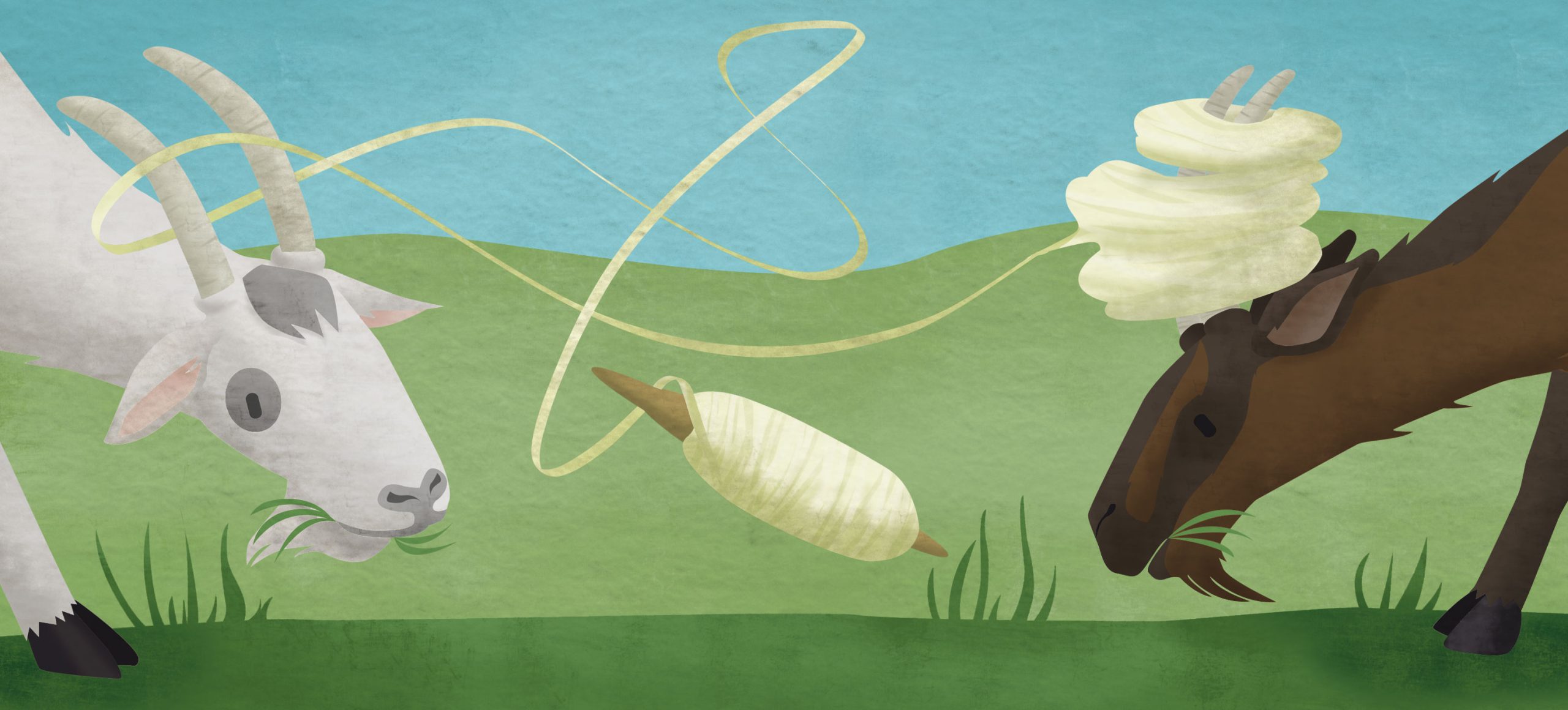Hello!
Today we are in Angrogna, in the Rouchalha hamlet, and we’re here for a tale about fairies…
A family of fairies had settled here, to live in these rocks and graze their livestock at night. They were quite shy and when they had to deal with humans they used to dress up as old countrywomen. One day one of these strange farmers approached a young lady at the grazing…
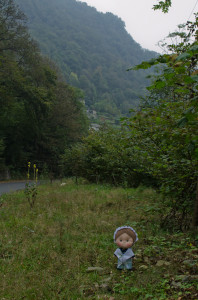
The fairy actually had kept an eye on the girl for long time, and she was very sad about that unlucky girl’s destiny: she was a young orphan that a woman from rouchalha had taken to her home to make her do the heaviest and drudgery houseworks, so that the ugly and hateful daughter of that crone could spend all of her days enjoying the sun without doing anything else.
One day the old woman approached the girl and, while passing her a comb, she asked her to delouse her. The young girl replied that she would do it with pleasure, but that she had a lot of wool to spin within the evening or her mistress would have got very, very angry. The old woman told her to put the wool and the spindle on the horns of goats, she then said a kind of magic formula and gave again the comb to the young shepherdess.
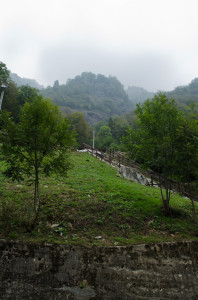
The girl had understood that she was in front of a fairy, so she took the comb and began to brush the old woman’s hair. Her locks were full of lice and nits, but the young girl kept on her work with care and gentleness. The fairy put the girl on probation asking her what she could see in her hair, and the shepherdess replied: “Pearls and golden straws”. The old woman, satisfied, replied: “Perla e dourin soun për tu” (pearls and gold are for you) and, while saying that, the girl’s face, marked by the hard life that the mistress made her lead, soon became more beautiful and lively.
When the old woman went away it was evening, and the wool that the shepherdess would have to spin was all well arranged on the horns of goats.

The old peasant used to go very often to get combed by the young shepherdess while she was at the grazing; meanwhile the girl, spending her time with the fairy, day after day became more beautiful and much smarter, thanks to the fairy’s words of wisdom. The mistress tormented herself, since the orphan was becoming more charming and refined, while her daughter was terrificly ungraceful. Although every day the mistress gave the girl more and more work to do, every evening the girl would turn back fresh and with the wool perfectly spun.
One day, the mistress decided to follow the young orphan to discover her secret: imagine her astonishment when she discovered that the wool was spun by itself on the horns of goats, while the maid was taking care of an old woman!
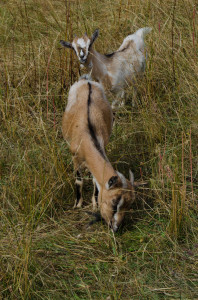
The mistress understood that the old woman was probably a fairy, so she had a brilliant idea (well, she thought it was a brilliant idea…). The day after she sent the orphan to hoe the fields , while she ordered her daughter to bring the goats to pasture. The daughter, obviously, was upset and went to the grazing reluctantly. When the old lady arrived to get combed, she refused unconditionally to do that. It then happened that the bag hooked at the horns of the goats did not fill with wool, but with… donkey poo!
The mistress gave her daughter a roasting, and in the following days the girl attempted to overcome her disgust to comb the fairy.
But, of course, she did it in a boorish way, pulling and tearing the old woman’s hair out, making her even scream in pain.
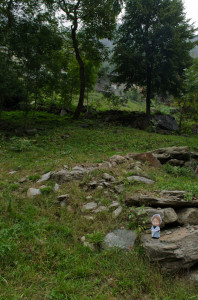
The orphan, meanwhile, had entered into the good graces of all of the fairies from rouchalha, and her beauty had continued to grow… All the young men in the area noticed it and asked to marry her, but she (as suggested by the fairies) waited for a better pretender. One day, at last, a classy and elegant stranger came to ask for her hand in marriage; the girl, at the top of her happiness, immediately accepted.
The mistress, however, green with envy, thought about her revenge: she imprisoned the girl under a sifter stuck with a rock, and wrapped her daughter with a long veil, making her ride a horse to meet the pretender.
All of the fairies, however, had rushed around the house, singing in a chorus:
“Bërla d’azou a caval
Bella fillha sout ar val!”
(Donkey poo riding the horse, beautiful girl under the sifter).
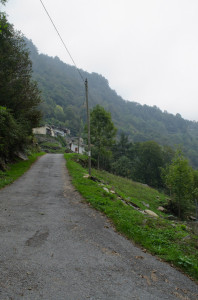
The young man understood that something was going wrong, so he removed the veil to the bride and realized that she was the mistress’ stupid ugly daughter. Therefore, helped by the fairies, he walked toward the house, he freed the shepherdess and, enraged, he shut the awkward girl in there.
While the two lovers could finally leave on the horse, the fairies dancing and laughing started to sing:
“Bella fillha a caval
Bërla d’azou sout ar val!”
(Beautiful girl riding the horse, donkey poo under the sifter)
How to get here:
follow the road for Pradeltorno (district of Angrogna) coming from Torre Pellice and, once you leave the Provincial Street 161 entering the town, take Generale Martinat Street right before the bridge on Angrogna creek.
Go through the whole street and you’ll reach the hamlet known as Chiot dl’Aiga, then take the road on your left (Pradeltorno Street) that takes to the valley bottom. After about 850 m you will find some houses on your right and the sign for the township Rouchalha (and just 350 m there is the Toumpi d’l Oursa!).
Do you want to read the tale in Italian ?
